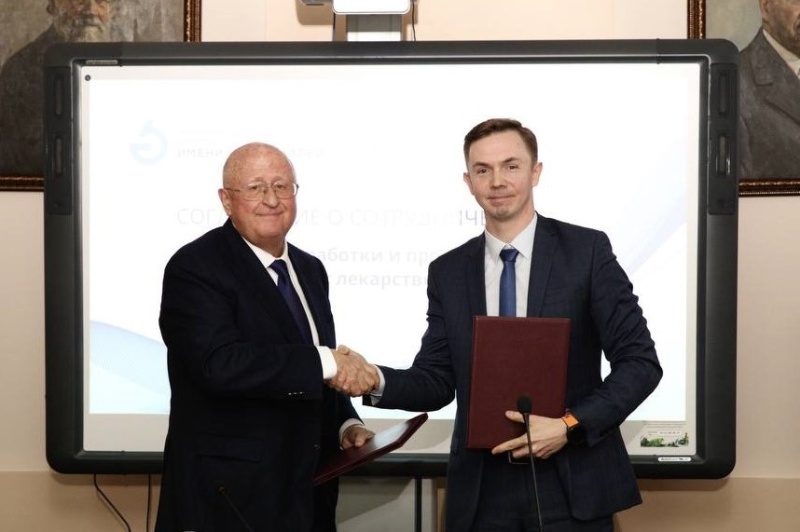
Russian scientists present successful experience in managing prostatitis at the congress in Madrid

Moscow, March 2025 — Up to 40%[1] of men experience symptoms of chronic prostatitis, which not only causes unpleasant symptoms but also adversely affects the sexual function. For a long time scientists have been searching for a reason why antibiotic treatment of the disease has not been efficient enough. Current studies have demonstrated that biofilms make germs resistant to antibiotics and complicate the standard treatment, often making infections return even after a treatment course. Leonid Spivak, MD, Professor of the Institute of Urology and Human Reproductive Health at Sechenov University, spoke about improving methods of biofilm management in the treatment of chronic prostatitis at the 40th Annual European Association of Urology Congress (EAU 25) in Madrid in March 2025.
Chronic prostatitis is one of the leading urological diseases: it is diagnosed in about 40% of men of all ages[1]. One of the reasons for its occurrence is due to bacterial infections, which cannot always be managed with antimicrobial drugs[2]. Failure to provide adequate and efficient therapy aimed at inflammation control results in inflammatory process progression, causing, among other things, cicatricial changes in the prostate tissue.
Biofilms constitute one of the reasons why antimicrobial drugs are ineffective. They are generated by various bacteria and fungi[3] and form a kind of «shield» around the bacteria, protecting them from the environment. This makes microorganisms being part of biofilms up to 1000 times more resistant to antibiotic treatment than their single cells[4]. Moreover, biofilm formation in the ejaculate is one of the causes of fertility disorders[5].
A group of Russian scientists led by Leonid Spivak has studied methods able to destroy biofilms that interfere with the effect of antibiotic therapy. In their work, the scientists highlighted the drug Longidaza (bovhyaluronidase azoximer), developed by scientists from the Institute of Immunology of the FMBA of Russia and Petrovax Pharm specialists. It is based on the enzyme hyaluronidase coupled to the polymer Azoximer bromide.
An open-label prospective single-center randomized phase IV study evaluated the effect of bovhyaluronidase azoximer on biofilms in combination therapy in patients with chronic prostatitis[7]. The control group of patients received only antimicrobial drugs, the experimental group received bovhyaluronidase azoximer in addition to antimicrobial treatment.
After 12 weeks, the patients in the experimental group showed a significant reduction in the severity of chronic prostatitis symptoms according to the NIH-CPSI scale. In addition, the combination therapy contributed to a statistically significant reduction in the white blood cell and bacterial cell counts in the ejaculate, as well as to the destruction of biofilms, as evidenced by the complete elimination of bacterial colonies.
The combination of antimicrobial treatment with bovhyaluronidase azoximer is helpful in tackling biofilms without inducing the development of antibiotic resistance, reduces the risk of recurrence of chronic prostatitis and improves the prognosis and quality of life of patients.
1V.A. Bozhedomov. Chronic prostatitis: a new paradigm of treatment//Urology. - 2016. - No. 3 (App). - P. 1-13.
2Ejike CE, Ezeanyika LU. Prevalence of chronic prostatitis symptoms in a randomly surveyed adult population of urban-community-dwelling Nigerian males. Int J Urol 2008;15(4):340–3. https://doi.org/10.1111/j.1442-2042.2008.02003.x.
3Vestby, Lene K et al. “Bacterial Biofilm and its Role in the Pathogenesis of Disease.” Antibiotics (Basel, Switzerland) vol. 9,2 59. 3 Feb. 2020, doi:10.3390/antibiotics9020059
4Rather, Muzamil Ahmad et al. “Microbial biofilm: formation, architecture, antibiotic resistance, and control strategies.” Brazilian journal of microbiology: [publication of the Brazilian Society for Microbiology] vol. 52,4 (2021): 1701-1718. doi:10.1007/s42770-021-00624-x
5Hi+med. High-tech in medicine. 2024;5(85):20–24. https://himedtech.ru/articles/bioplenki-v-eyakulyate-odna-iz-prichin-narusheniy-fertilnosti.html
6Spivak L.G. A0219: A randomized controlled trial of bovhyaluronidase azoximer impact on biofilms in ejaculate of patients with chronic prostatitis and infertility. EAU25 - 40th Annual EAU Congress. Madrid, Spain, 22 March 2025 https://urosource.uroweb.org/resource-centres/EAU25/261941/abstract
7E. E. Bragina, L. G. Spivak, M. A. Gazimiev, M. S. Evdokimov, O. A. Mkhitaryan. Effects of bovhyaluronidase azoximer on bacterial biofilms in the ejaculate of patients with chronic prostatitis. Experimental and clinical urology 2023;16(3):87-92; https://doi.org/10.29188/2222-8543-2023-16-3-87-92


